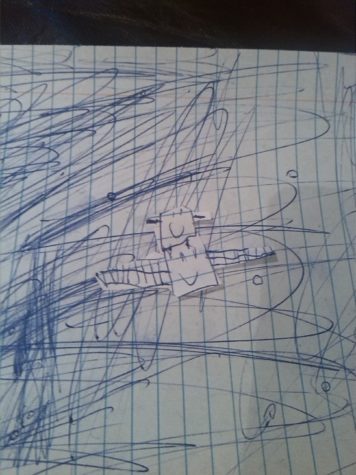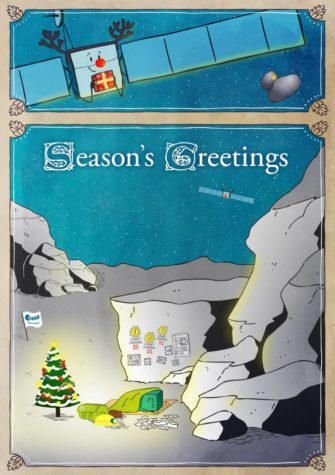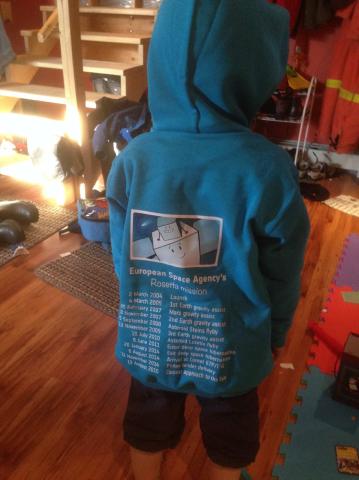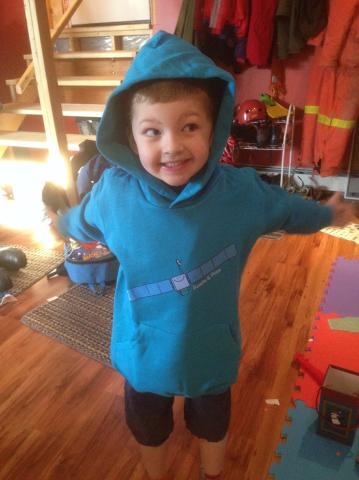 On September 30, the Rosetta orbiter will make a controlled collision with Comet 67P/C-G. It is not designed for landing, so this is the last we will hear from it. This date also marks an end to a happy period for my family that started in 2013 when my son was just four years old and the European Space Agency released the first of its “Once upon a time…” cartoons about the mission.
On September 30, the Rosetta orbiter will make a controlled collision with Comet 67P/C-G. It is not designed for landing, so this is the last we will hear from it. This date also marks an end to a happy period for my family that started in 2013 when my son was just four years old and the European Space Agency released the first of its “Once upon a time…” cartoons about the mission.
In the animation series, Rosetta is depicted as a calm pilot, older sister to the lander Philae. In the voice of an American grandfather, the narrator takes us through all of the latest developments in the mission as if we are sitting on his knee and he is reading a bedtime story. Historical context appears in the reading material the pair packed for the long journey, and other space probes are retroactively anthropomorphized, given relationships — grandfather, cousin — to Rosetta and Philae.
There are questions around the use of anthropomorphism in astronomy communication (Ann wrote about this here) but to me the enthusiasm and dedication of Rosetta and Philae’s animated characters are not such a far stretch from the human intentions they represent to us. If humanity demonstrates its collective hopefulness in launching a small probe, then that probe can be portrayed as a hopeful little dude. The mission, having launched in 2004, had been all but forgotten by the public by 2013, but those fairy tale cartoons have given my family a couple of dear friends out in the great, cold universe. We will be loath to say goodbye.
They inspired spontaneous drawings (see above), and my son still sports his Rosetta hoodie.
In one episode, as Philae prepares to make a landing on the comet, Rosetta packs him a backpack full of equipment, including a sandwich. “Isn’t he a robot?” asked my son. “Then why did she give him a sandwich?”
I found the answer to his question in a “making of” account in the journal Communicating Astronomy with the Public: “We decided to add a sandwich to Philae’s backpack to indicate that the lander would need an independent source of energy to operate on the comet’s surface.”
Every creative decision was justified like this, and the products were so thoroughly vetted that it took months after news broke about mission developments before they were reflected in cartoon episodes. But the wait was worth it.
After Philae landed in the wrong spot – a dark place where sun could no longer power his communications, the animation team faced a quandary. They knew Philae was destined to die on the comet, but they had produced an empathetic link with the audience that would be traumatic to break. They chose a sleeping analogy instead, and put out Christmas cards that suggested Philae was alive and snug in a sheltered nook.
The most climactic moment so far: “Then one Saturday in June, [Rosetta] received a phone call. It was Philae! He was awake!”
We will approach the next episode – after Rosetta crashes down – with some trepidation. I don’t know how the death of Philae’s big sister could be handled as anything less than just that. But based on the gentle thoughtfulness of this series, I have faith that the ending will be suitably hopeful.
Images: ESA & me


Thank you so much for writing about this! I hadn’t seen the cartoons before, and now my almost-four-year-old daughter is pretending to be Rosetta all day. It will be, uh, interesting to see how the final episode gets incorporated into her play . . .